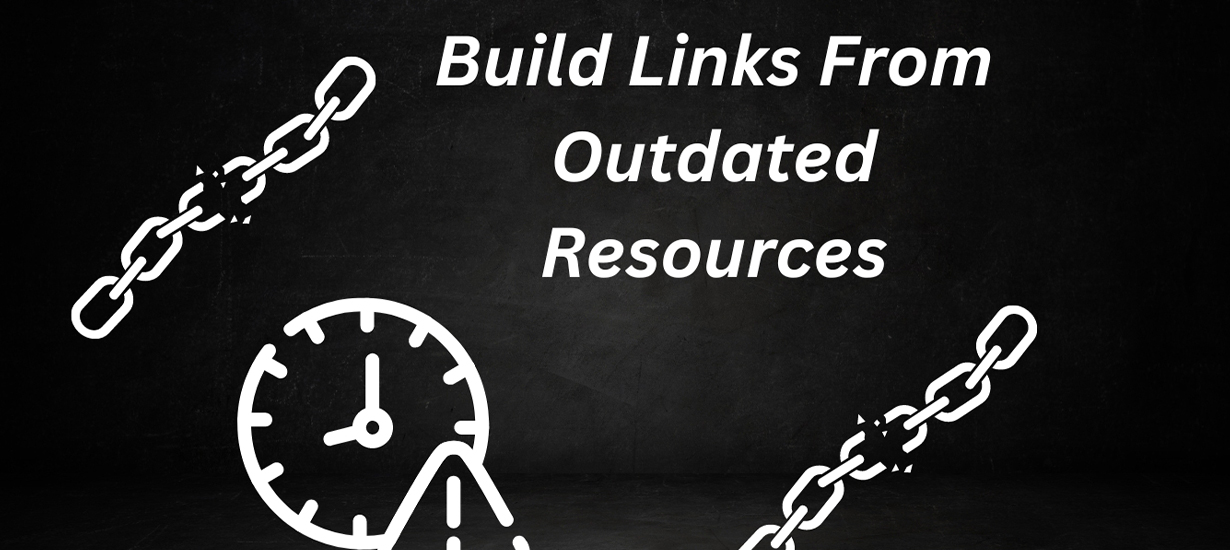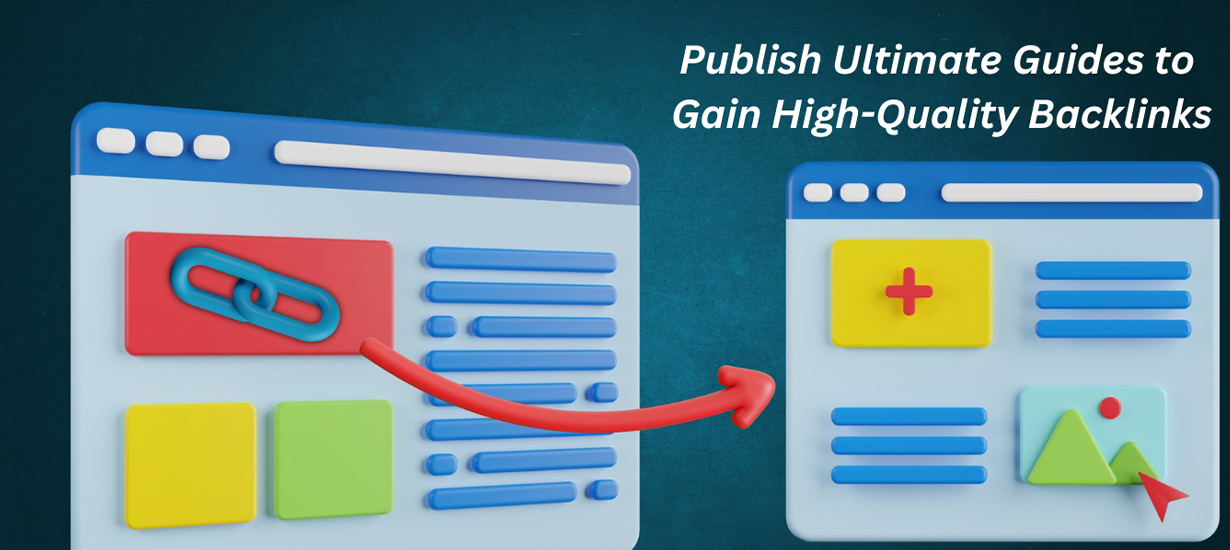Anchor and High-quality content are not the only measurements for evaluating the quality of a link. So, if you have thousands of links with low-powered domains, it is nothing but a number for ranking a website.
One of the most effective ways to get high-quality backlinks is to contact top sites or make your landing page so high-quality that people start linking to your site as a reference.
In this blog post, we'll discuss how to use proven content formats, including lists and how-tos, to attract links. You’ll learn about leveraging authority resource pages, replicating competitors' best backlinks, and even building your own branded strategies to make your content stand out.
How to Get High-Quality Backlinks: 15 Key Steps

To acquire high-quality backlinks, focus on creating valuable content, networking with other websites, and utilizing outreach strategies effectively. Here are some key strategies:
Become a Source for Reporters and Bloggers
Working with reporters and bloggers can be a great way to get high-quality backlinks. This means you become a trusted source, sharing your expertise in exchange for mentions in their articles.
Intro to HARO and Similar Platforms
HARO, or Help A Reporter Out, is a platform that connects reporters with experts. By helping reporters with their stories, you can earn backlinks to your website.
- How It Works: Sign up for HARO and receive daily emails with queries from reporters looking for sources.
- Opportunity for Experts: Respond to queries that fit your expertise and get mentioned in articles.
Establishing Credibility
To be a source, you need to show that you are an expert in your field. This requires having a strong online presence.
- Professional Profiles: Keep your website LinkedIn updated with your current skills and achievements.
- Prompt Responses: Answering quickly shows reporters you are reliable and serious about helping.
Tips for Responding Effectively
When replying to reporters, it’s important to be clear and relevant. Here’s how you can do it well:
- Stay Concise: Get straight to the point without unnecessary details.
- Stay On Topic: Make sure your response directly answers what the reporter is asking.
- Highlight Credentials: Share your background and experiences that make you a reliable source.
- Follow Instructions: Pay attention to any specific guidelines reporters provide to ensure your response meets their needs.
Publish “Skyscraper” Content
Skyscraper is a powerful technique for building high-quality backlinks. It involves creating content that stands out and improves on what already exists. Here’s how you can use this method effectively.
Define Skyscraper Content
Skyscraper content is about making something better than what’s already out there. You take a popular article and add more details, better pictures, or new facts to make it more appealing.
- More Depth: Include extra information or new insights.
- Better Visuals: Use high-quality images or graphics.
- Updated Information: Ensure the content is current and relevant.
Identifying Popular Content
Finding popular content is the first step. Use online tools to discover what works well in your niche.
- Ahrefs: This tool helps you see which articles have a lot of links.
- BuzzSumo: Find content that’s widely shared and talked about.
Creating Compelling Content
Once you know what’s popular, it’s time to make your content even better. Focus on uniqueness and quality.
- Unique Insights: Add your own thoughts or expert opinions.
- Up-to-date Information: Include recent data or trends.
- High-Quality Visuals: Use clear and attractive images or infographics.
Build Links From Outdated Resources

Building backlinks from outdated resources can be a smart and reliable way to improve your website's authority. Outdated resources are often overlooked, yet they still hold significant value due to their high domain authority. Here’s how you can leverage them to your advantage.
Understanding Outdated Resources
Outdated resources are web pages or articles that contain broken links or outdated information but still maintain a high domain authority. These pages once provided valuable content but need updating, making them perfect opportunities for link building.
- High Domain Authority: Despite being outdated, these pages still rank well.
- Potential for Improvement: By updating the content, you can provide a fresh perspective.
Finding Outdated Content
To capitalize on outdated resources, the first step is to find them. Luckily, there are tools available to help you identify these opportunities.
- Ahrefs: Use this tool to find pages with broken links in your field.
- Broken Link Checker: Checks broken links on web pages related to your topic.
Approaching Webmasters
Once you've identified outdated resources, it's time to reach out to the webmasters. Your approach should be professional and helpful.
- Be Polite: Always start your message with a friendly greeting.
- Offer Solutions: Provide a replacement link to your updated content.
- Highlight Benefits: Explain how your content will enhance their page.
Use Content Formats Proven To Generate Links
Finding the right content format is essential for attracting high-quality backlinks. Certain formats are more successful because they deliver information in a way that's easy to understand and share.
Overview of Effective Formats
Using the right format can make your content more appealing. Formats like lists, how-to guides, and case studies are popular because they:
- Offer clear and valuable information
- Are easy to read and understand
- Provide actionable insights
Examples of Successful Formats
To inspire your content, look at examples from well-known websites. These sites often use:
- Lists: "Top 10 Ways to Improve Your Writing"
- How-To Guides: "How to Write a Blog in 9 Steps"
- Case Studies: "How Company X Doubled Their Sales with SEO"
Tips for Creating Shareable Content
To make your content more link-worthy, consider these tips:
- Visual Appeal: Use images and infographics to break up text.
- Keep It Concise: Get to the point quickly to keep readers interested.
- Make It Actionable: Provide steps or tips that readers can immediately apply.
Publish Ultimate Guides to Gain High-Quality Backlinks

Creating ultimate guides is a powerful way to attract quality backlinks. These guides are comprehensive resources that offer in-depth information on a specific topic. Here's how you can structure and promote them effectively.
Benefits of Detailed Guides
Detailed guides provide immense value to readers, making them more likely to be shared across the internet. Here's why they work:
- Comprehensive Information: They cover topics thoroughly, leaving no questions unanswered.
- Trust Building: You establish trust with your audience by offering valuable content.
- Link-Worthy: High-quality content attracts links from other websites looking to reference reliable sources.
Structuring Guides
Proper structure is key to making your guide easy to read and navigate. Follow these tips:
- Use Clear Headings and Subheadings: Break down the content into sections for easier digestion.
- Incorporate Bullet Points: Use bullet points for lists to make information clear and concise.
- Add Visuals: Use images or infographics to explain complex ideas and keep readers engaged.
Promotion Strategies
Once your guide is ready, it's important to promote it effectively to gain backlinks. Consider these strategies:
- Share on Social Media: Post your guide on platforms like Facebook, Twitter, and LinkedIn to reach a broader audience.
- Engage with Influencers: Connect with industry influencers who might share your guide with their followers.
- Utilize Email Marketing: Send your guide to your email list, encouraging subscribers to read and share it.
Use Branded Strategies and Techniques
Branded strategies are powerful tools for building your online presence. They help make your content stand out and attract valuable backlinks. Here's how you can effectively use branded strategies to enhance your backlink profile.
Importance of Unique Strategies
Creating unique strategies is essential for establishing authority in your field. When your approach is memorable, others are more likely to reference your work, leading to more backlinks.
- Stand Out: Unique strategies help your content stand out from the competition.
- Build Authority: Being original shows expertise and helps build trust with your audience.
- Increase Memorability: Memorable content is more likely to be shared and linked to by others.
Case Studies of Success
These examples show how others have crafted and promoted their branded strategies effectively.
- Learn from the Best: Study how top brands have used unique strategies to gain visibility.
- Identify Patterns: Find common elements that led to their success.
- Adapt Techniques: Use these insights to adapt and refine your own strategies.
Developing Your Own
Creating your own branded strategy involves identifying a unique approach and promoting it consistently. This can set you apart and attract high-quality backlinks over time.
- Think Creatively: Come up with ideas that reflect your brand's voice and values.
- Consistent Promotion: Share your strategy across various platforms to reach a wider audience.
- Monitor and Adjust: Keep track of your strategy's performance and make adjustments as needed.
Leverage Authority Resource Pages
Authority resource pages are powerful tools for building high-quality backlinks. These pages are trusted by search engines and often link to valuable content, making them ideal for backlink strategies.
Identification of Authority Pages
To start, you must find authority pages that are relevant to your niche. These pages often compile resources related to specific topics. Here’s how to identify them:
- Use Search Engines:Type keywords related to your niche followed by phrases like "resources," "useful links," or "recommended sites."
- Check Competitors: Look at where your competitors get their backlinks and see if they are listed on any resource pages.
- Use Online Tools: Tools like Moz or Ahrefs can help identify authority pages linking to your niche.
Getting Included
Once you've identified potential authority pages, the next step is to get your resource included. Here’s how to do it effectively:
- Craft a Polite Request: Write a friendly email to the webmaster. Introduce yourself and explain why your content adds value to their page.
- Highlight Your Resource: Clearly explain what makes your content unique and beneficial.
- Keep It Brief:Webmasters are busy, so ensure your message is concise and to the point.
Creating Your Own Resource Page
Another way to leverage authority is by creating your own resource page. Here’s how you can build one:
- Curate High-Quality Content: Compile a list of top-notch resources that are useful to your audience. This could include articles, tools, or guides.
- Organize Your Page: Make it easy for visitors to find what they need by categorizing resources clearly.
- Promote Your Page: Share your resource page on social media and with industry contacts to encourage others to link back to it.
Replicate Competitors Best Backlinks

One of the best ways to improve your website's ranking is by looking at what your competitors are doing. By analyzing their backlinks, you can discover new opportunities for your own site. Here’s how to do it:
Backlink Analysis Tools
To begin, you need the right tools. Backlink analysis tools like Ahrefs, SEMrush, or Moz are essential. These tools can help you:
- Discover Competitors' Links: See where your competitors are getting their backlinks.
- Analyze Link Quality: Check how strong and trustworthy those links are.
- Track Link Changes: Observe how their backlink profile changes over time.
Identifying Target Links
Once you have the tools, the next step is to identify potential links. Your competitors' sites may have patterns in the kinds of links they receive.
- Spot Patterns: Are certain types of sites more common? Look for blogs, news sites, or industry pages.
- Evaluate Relevance: Check if these sites are relevant to your field.
- Assess Authority: Find out if these sites have a good reputation and authority.
Earning Similar Links
After identifying promising sites, reach out with your content.
- Create Value: Ensure you have valuable content that these sites would want to link to.
- Craft a Pitch: Write a simple and clear message explaining why your content would benefit their site.
- Follow-up: If you don’t hear back, send a polite follow-up to remind them.
Analyzing Competitors’ Mentions
When aiming for high-quality backlinks, understanding what your competitors are doing can be very helpful. By analyzing their mentions, you can discover potential for your own site.
Tracking Mentions
To start, it's important to know where your competitors are being talked about online. This can help you find sites that might be interested in your content too.
- Use Tools: Tools like Google Alerts and Mention can track when and where your competitors are mentioned.
- Stay Updated: Regular updates ensure you don’t miss any potential opportunities.
- Identify Key Sites: Spot frequently mentioned platforms that could also feature your content.
Capitalizing on Unlinked Mentions
Not every mention includes a backlink. This opens up a chance for you to step in and offer valuable content.
- Spot Unlinked Mentions: Find mentions that don’t link back to your competitors’ sites.
- Reach Out: Contact these sites and suggest linking to your content instead.
- Provide Value: Share articles or resources that are relevant and helpful to their audience.
Building Relationships

Creating relationships with sites that mention your competitors can lead to long-term benefits and future backlink opportunities.
- Foster Connections: Engage with site owners and editors by commenting on their content or sharing their posts.
- Offer Collaboration: Suggest guest posts, interviews, or co-authored pieces.
- Maintain Communication: Keep in touch regularly to stay top of mind for any new opportunities.
Build Backlinks with Infographics
High-quality backlinks can be built with infographics. They combine images and information, making them easy to understand and share. Let's explore how infographics can help you gain valuable backlinks.
Effectiveness of Infographics
Infographics are successful because they catch the eye and are simple to distribute online. Here's why they work well:
- Visual Appeal: People love visuals, and infographics are more attractive than plain text.
- Shareability: Infographics are easy to share on social media, blogs, and websites.
- Engagement: They keep readers interested, encouraging them to share the content further.
Designing Infographics
Creating an infographic is not just about making it look pretty. It should be informative and straightforward. Here are some tips:
- Clear and Concise: Use simple visuals and short text to convey the message quickly.
- Focused Content: Stick to the main points and avoid overcrowding with too much information.
- Maintain Consistency: Use a consistent color scheme and font style to make it professional.
Outreach Strategies
Once your infographic is ready, it's time to share it with the world. Here’s how to effectively promote it:
- Social Media: Share it on platforms like Instagram, Pinterest, and Twitter where visuals are popular.
- Email Outreach: Contact bloggers and websites in your niche and offer them your infographic as a free resource.
- Submit to Directories: Share your infographic on infographic submission sites to reach a wider audience.
Guest Blogging: A Path to Quality Backlinks
By guest blogging, you can enhance your online presence and gaining high-quality backlinks. It not only boosts your website's authority but also connects you with a wider audience. Here’s how you can make the most of guest blogging.
Importance of Guest Blogging
Writing articles for other sites isn't the only part of guest blogging. It's a strategic move to establish yourself as an expert in your field while earning valuable backlinks. These links come from reputable websites, enhancing your site's credibility and helping improve search engine rankings.
- Builds Authority: Sharing your knowledge on popular platforms boosts your reputation.
- Direct Backlinks: Gain links from trusted sites that search engines respect.
Finding Reputable Blogs

Choosing the right blogs to contribute to is crucial. You want to ensure that your guest posts are featured on sites that have a good standing in your industry.
- Check Domain Authority: Look for blogs with a high domain authority to ensure quality linkage.
- Assess Reputation: Make sure the blogs are well-regarded and relevant to your niche.
Crafting Content
Crafting the right content is essential to successful guest blogging. Your article should resonate with the host site's audience and offer something unique.
- Know the Audience: Understand who you’re writing for and what interests them.
- Provide Unique Value: Share insights or information that isn't easily found elsewhere.
Building a Solid Internal Linking Structure
Linking your website internally is crucial for improving your website's SEO and enhancing user experience. Let's explore how internal links work and why they're important.
Role in SEO
Internal links are connections between different pages on your website. They help search engines understand your site's layout and content. Here's why they're vital:
- Improves Navigation: Links guide visitors to important pages.
- Spreads Link Equity: Boosts the importance of key pages.
- Enhances Indexing: Helps search engines find and index new content.
Best Practices
Using internal links correctly can make a big difference. Here are some tips to do it right:
- Use Descriptive Anchor Texts: Make sure the linked text clearly describes the destination page.
- Link to Relevant Content: Connect related topics to keep readers engaged.
- Maintain a Logical Structure: Organize your links to create a clear path for users.
Optimization Tools
Several tools can assist in optimizing your internal linking strategy. They identify opportunities and suggest improvements:
- Yoast SEO: Offers recommendations for internal links.
- Screaming Frog: Analyzes your site to find linking issues.
- Google Search Console: Provides insights into how Google views your links.
Outreach and Promote Your Best Content Everywhere
You need to reach out to those who can see your best work in order to make sure they see it. This means sharing it in the right places and with the right people. Here’s how you can do it:
Creating an Outreach Strategy
It's crucial to have a plan for who you will contact about your content. Think about:
- Key Influencers: Find people who have a big following and who might like what you’ve created.
- Industry Leaders: Look for experts in your field who could find your content useful.
- Relevant Sites: Identify websites that would benefit from sharing your work.
Using Social Media and Email
Once you know who to contact, use social media and email to get your message out. Here’s how:
- Social Media: Engage your audience by sharing your content on social media platforms.
- Personalized Emails: Write emails that are tailored to the person you’re contacting. Make it clear why your content is valuable to them.
Building Relationships
Creating connections with others in your field can be very helpful. Here are some tips:
- Long-Term Connections: Try to build lasting relationships with influencers and website owners.
- Engagement: Interact with their content and offer help when you can. This can make them more likely to support your work.
Give Interviews
Giving interviews is a great way to earn high-quality backlinks for your website. When you share your knowledge and expertise in interviews, it can help you reach new audiences and build valuable connections. Here's how to make the most of interview opportunities for backlink success.
Identifying Opportunities

Finding the right places to give interviews is the first step to gaining good backlinks. Look for platforms that match your expertise and interests.
- Podcasts: Search for podcasts in your niche that host guest speakers.
- Blogs: Explore blogs that feature industry experts and invite guest contributions.
- Online Publications: Identify online magazines and websites that conduct expert interviews.
Preparing for Interviews
Preparation is key to a successful interview. Knowing your audience and having talking points ready helps you deliver valuable insights.
- Research the Audience: Understand who will be listening or reading to tailor your message effectively.
- Key Talking Points: Prepare a list of important topics you want to discuss.
- Practice: Rehearse your answers to common questions to ensure you sound confident and knowledgeable.
Leveraging Interviews
Once your interview is published, use it to gain the most benefit and backlinks possible.
- Promote on Your Website: Share the interview link on your site to drive traffic.
- Social Media Sharing: Post about your interview on social platforms to reach a wider audience.
- Engage with Comments: Respond to comments or questions about the interview to build relationships and further your reach.
Broken Link Building: A Smart Strategy for Backlinks
Building broken links can help your website gain high-quality backlinks. Tracking down broken links elsewhere and replacing them with your own content can also improve your website's authority and traffic. This strategy can be effective if you know how to use it.
Explanation and Benefits
Broken link building involves helping website owners fix broken links by suggesting your content as a replacement. This provides a win-win situation: the website owner fixes their broken links, and you gain valuable backlinks. Benefits include:
- Boosted SEO: Quality backlinks help improve your site's search engine ranking.
- Increased Traffic: More backlinks can lead to more visitors to your site.
- Enhanced Reputation: Being linked by reputable sites boosts your site's credibility.
Finding Broken Links
Finding broken links is the first step in this strategy. You can use online tools to simplify this process:
- Ahrefs: This tool helps you find broken links by providing detailed reports on website link health.
- Check My Links: A browser extension that quickly scans web pages for broken links.
Approaching Webmasters
Once you find broken links, the next step is to reach out to webmasters. Here are some tips for a successful approach:
- Be Helpful: Offer a solution by suggesting your content as a replacement.
- Explain the Fit: Clearly explain why your content is a good match for their broken link.
- Keep It Simple: Write concise and polite messages to increase your chances of a positive response.
Conclusion
Your website's visibility and credibility can be enhanced by creating high-quality backlinks with Rankegg. Create compelling content guest blog and connect with influencers to attract valuable links.
Success requires persistence and patience to acquire backlinks. As you gain confidence, gradually integrate additional strategies after honing one or two strategies.
It is possible to gradually build a robust network of high-quality backlinks by faithfully implementing these approaches.

